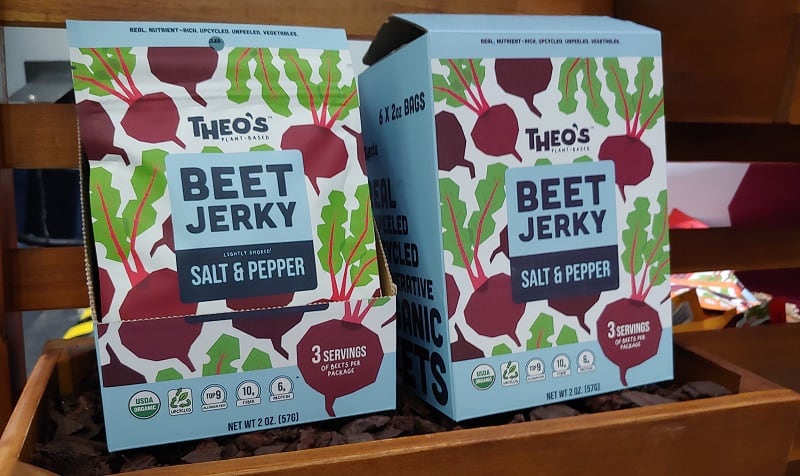Asking for money is humbling – especially when ‘no’ comes more often than ‘yes’ – which is why the founder of premium pantry brand Eat Happy Kitchen urgers entrepreneurs to ask themselves the hard questions before anyone else does.
Anna Vocino explained that her worries about asking for money were not rooted in a fear of putting herself out there, which she has done her entire career – first as a comedian and actor and then as a cookbook author who routinely appeared on local and national television.
Rather, she said, she worried she would annoy people by asking for help and about the awesome responsibility of stewarding capital from her friends, family and fans who trust her for cooking advice.
Step 1: Identify root fears through self-reflection
To overcome her fear, she decided to take the advice she often gives others who are anxious about being on camera.
“Generally, if you feel a fear of being on camera or talking about your brand, I would say there might be other areas where you feel fear” that must be identified and addressed, she said.
And while she said she was excited about her brand and believed in her products, she also identified two worries: 1) she had never raised money before, and 2) her business was “incredibly stretched thin” across multiple categories even as it continued to carve out space for its flagship product.
In addition to its original marinara, Eat Happy Kitchen offers several clean-label sauces, including Pink Crema, Arrabbiata, Puttanesca and Pumpkin Marinara.
The company also recently launched a line of taco seasonings and spice blends, all of which are free of fillers and artificial dyes, and at Natural Products Expo West it debuted crispy cheese bites flavored with the company’s spices.
In addition, Eat Happy Kitchen is expanding its distribution with 900 stores nationwide now carrying its products. And as exciting as the growth is, Vocino said it is also expensive, which is why she recently overcame her fear of asking for money to launch an equity crowdfunding campaign on the platform Start Engine, where she raised $700,000.
Startup Spotlight: More advice from founders to founders
Catch-up on recent episodes of Startup Spotlight that include must-have tips and strategies for building a CPG food and beverage business:
- Global flavors help candy stand out in 'static' crowd - Bold, cross-cultural flavors can set apart emergi ng candy brands - especially when paired with thoughtful retail strategy and a focus beyond social media hype
- 'A love letter to Chicago,' Local Style Potato Chips celebrate Windy City Flavors - One potato chip startup hits the block with unique Chicago flavors - creating a sense of belonging one retailer at a time
- Local loyalty: The secret ingredient to faster profitablity and successful expansion - To become a profitable business quickly in an industry known for razor thin margi ns, kid-friendly flavored milk startup Jubilee's is focusing on its local fanbase first before expanding
- Trademarking, licensing and a dash of AI make condiment company's recipe for success - Startup Panicbus founder and the inventor of the new condiment Chalsa is reimagin ing how to build a food brand with an 'asset light' licensing model
Step 2: ‘Assume nobody knows’ and tell them
The campaign required her to identify and address another fear of “taking up too much space” or annoying people by posting frequently about the brand, products and fundraise, she said.
“What I noticed was sometimes I would hesitate” before posting on social media, LinkedIn or other platforms, she said. She explained she would ask herself, “Is this too much? Am I posting too frequently? Am I taking up too much space?”
The answer was no, she said.
“Every time I would post anything or do a LinkedIn post or send an e-blast or whatever, do a sub stack newsletter post, somebody would write, ‘Oh, I had no idea that you were doing this,’” she said. “You have to assume nobody knows.”
If that sounds easy, Vocino says it is not – but that doesn’t mean overcoming self-doubt is impossible. It does, however, require self-reflection, and it may require help from strangers.
“I would first ask some belief questions, like What do you believe? What do you think is going to happen if you ask for money?” she advised, adding this will often uncover “some negative believe that is at the root of it all,” which once address solves multiple concerns.
Step 3: Ask for help
She also advised asking at least six other companies or entrepreneurs about their experience tackling the same objective or task. That way, she said, she could learn from their mistakes and successes.
Armed with this self-knowledge and advice from her peers, Vocino said her crowdfunding campaign was a success and she is now better prepared for if or when she needs to raise funds again in the future.
But before that, she said, her No. 1 goal is to use the funds from the current round to produce more product, drive velocities and “get that revenue going.”


